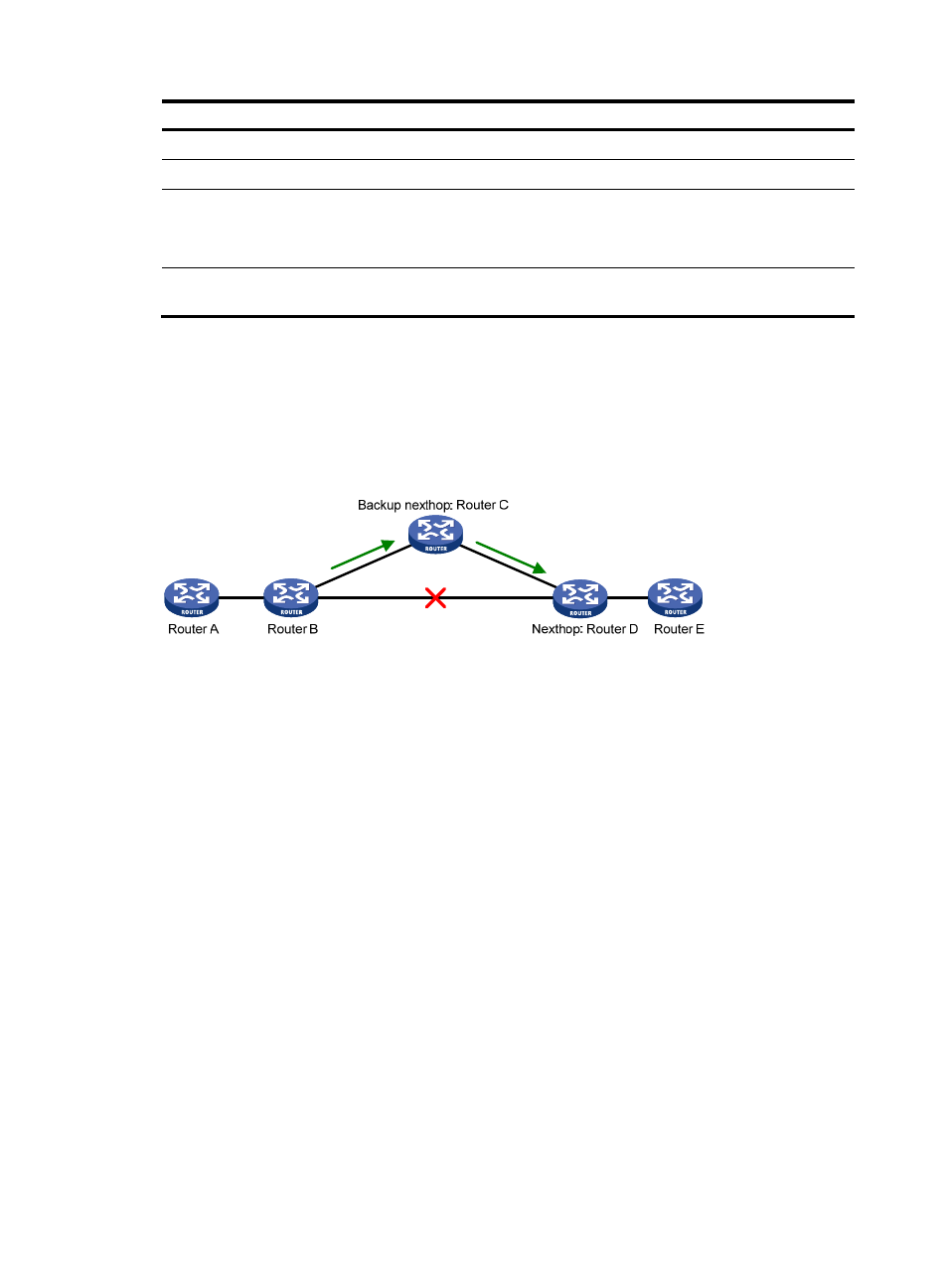Configuring is-is frr, Configuration prerequisites, Configuration guidelines – H3C Technologies H3C S5560 Series Switches User Manual
Page 176

160
Step Command
Remarks
1.
Enter system view.
system-view
N/A
2.
Enter interface view.
interface interface-type interface-number N/A
3.
Enable IS-IS on an interface.
isis enable [ process-id ]
N/A
4.
Enable BFD on an IS-IS
interface.
isis bfd enable
By default, an IS-IS interface
is not enabled with BFD.
Configuring IS-IS FRR
A link or router failure on a path can cause packet loss and routing loop. IS-IS FRR uses BFD to detect
failures and enables fast rerouting to minimize the failover time.
Figure 39 Network diagram for IS-IS FRR
, after you enable FRR on Router B, IS-IS automatically calculates or designates a backup next
hop when a link failure is detected. In this way, packets are directed to the backup next hop to reduce
traffic recovery time. Meanwhile, IS-IS calculates the shortest path based on the new network topology,
and forwards packets over the path after network convergence.
You can either enable IS-IS FRR to calculate a backup next hop automatically, or designate a backup next
hop with a routing policy for routes matching specific criteria.
Configuration prerequisites
Before you configure IS-IS FRR, complete the following tasks:
•
Configure IP addresses for interfaces to ensure IP connectivity between neighboring nodes.
•
Enable IS-IS.
Configuration guidelines
•
Do not use FRR and BFD at the same time. Otherwise, FRR might fail to take effect.
•
The automatic backup next hop calculation of FRR and that of TE are mutually exclusive.